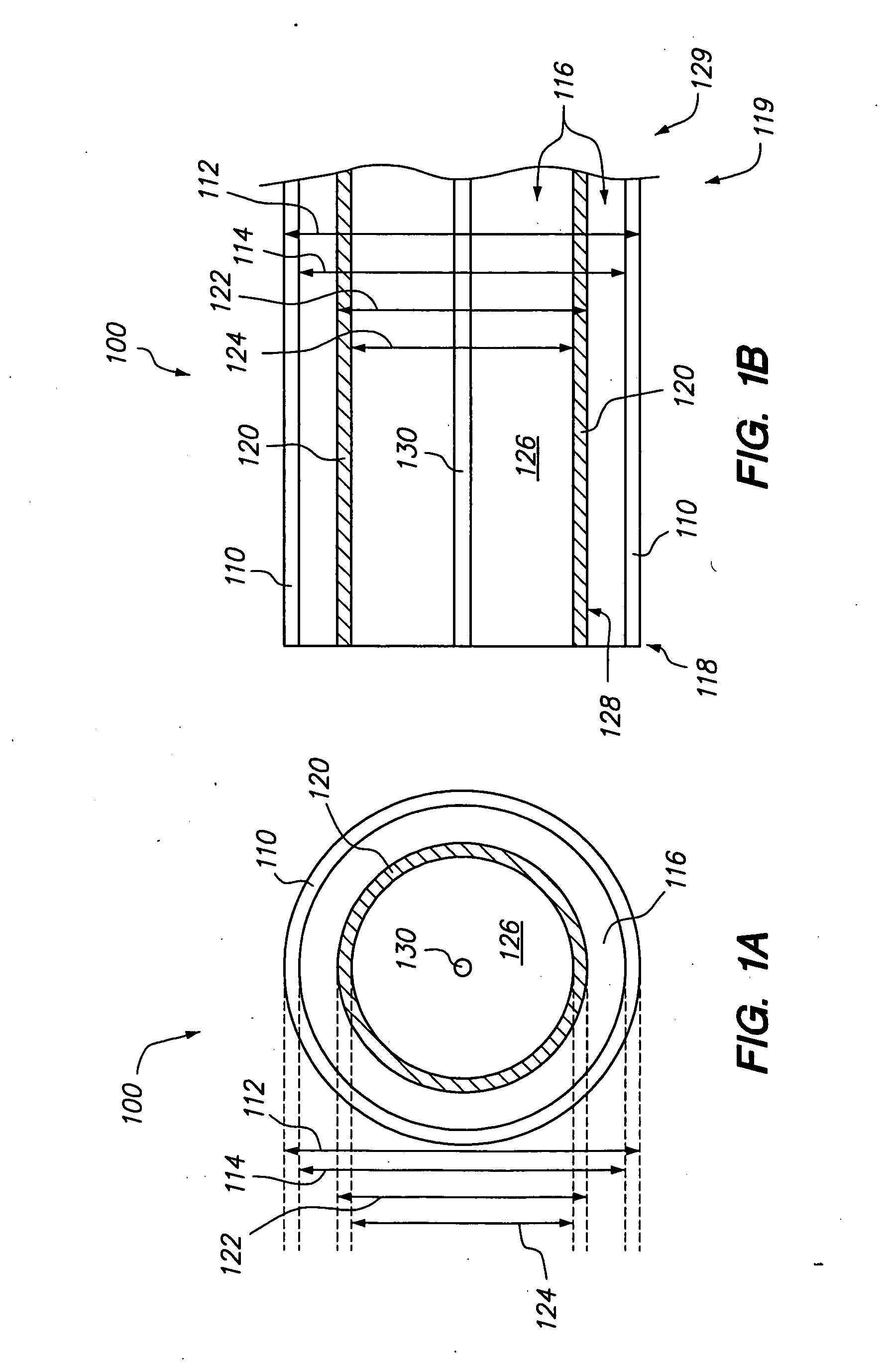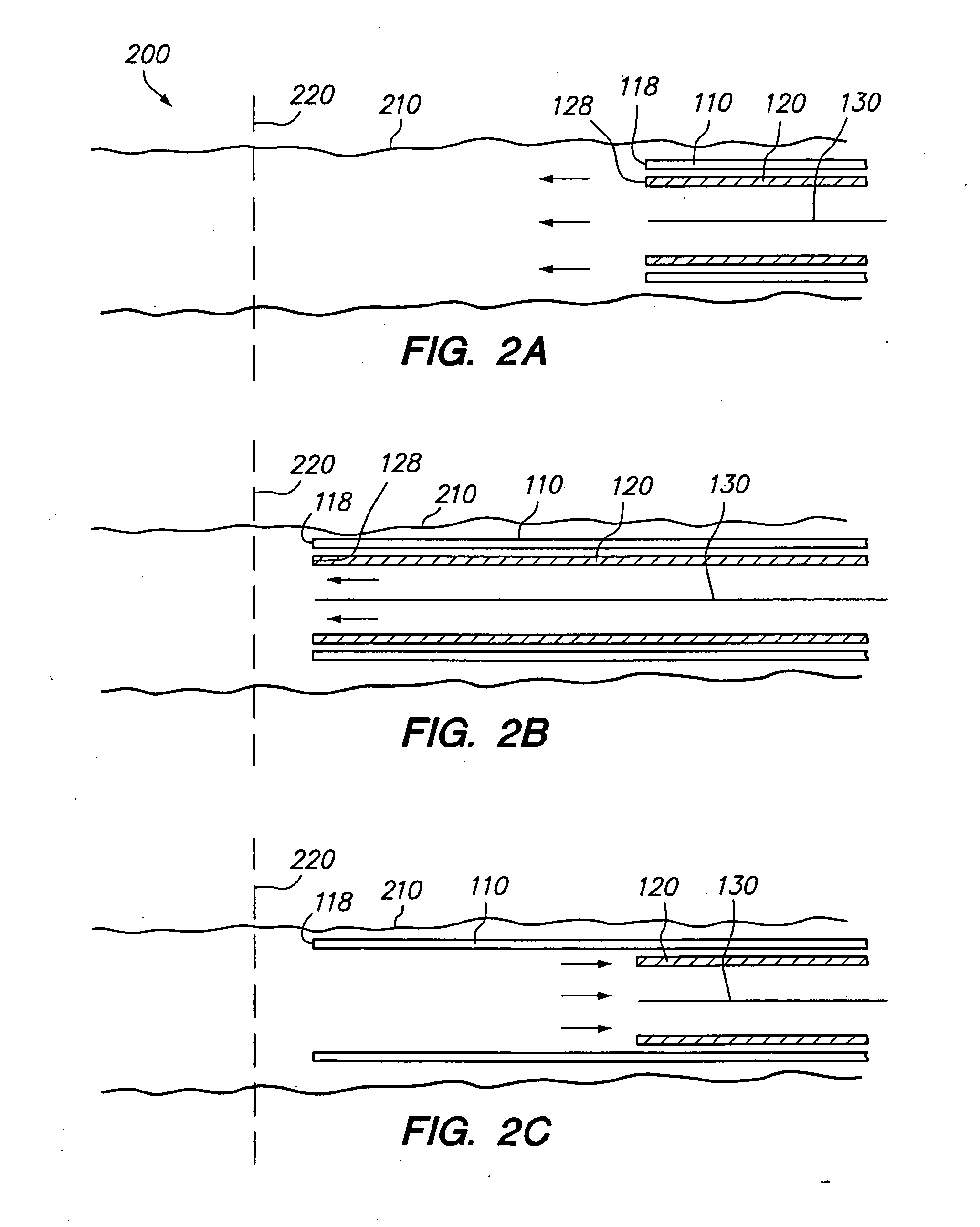Method and system for delivering an implant utilizing a lumen reducing member
a technology of lumen reducing member and implant, which is applied in the field of implantable devices, can solve the problems of significant bleeding, serious injury and death, and the difficulty of accessing and treating intracranial aneurysms, and achieves the effects of improving the quality of life, and improving the safety of patients
- Summary
- Abstract
- Description
- Claims
- Application Information
AI Technical Summary
Benefits of technology
Problems solved by technology
Method used
Image
Examples
Embodiment Construction
[0018] Referring to FIGS. 1A-B, a system or assembly 100 of the present invention includes a first or delivery member 110, such as an outer, annular catheter or sheath, a second or reducing member 120, such as an inner, annular catheter or sheath, and a guide 130, such as a guide wire. The system 100 is used to deliver an implant (not shown) through a vascular space to a vascular site, such as an aneurysm, tumor, a site for capturing embolic debris, or other vascular malformation (generally vascular site).
[0019] The present invention is suitable for delivering or advancing various devices or implants into the body of a patient for different applications. For example, the present invention can be used to deliver a vaso-occlusive implant, such as a coil and a liquid, to treat or occlude an aneurysm. Further, the present invention can be used to deliver an embolic containment implant which facilitates delivery of a vaso-occlusive implant by, for example, reducing the size of the apert...
PUM
 Login to View More
Login to View More Abstract
Description
Claims
Application Information
 Login to View More
Login to View More - R&D
- Intellectual Property
- Life Sciences
- Materials
- Tech Scout
- Unparalleled Data Quality
- Higher Quality Content
- 60% Fewer Hallucinations
Browse by: Latest US Patents, China's latest patents, Technical Efficacy Thesaurus, Application Domain, Technology Topic, Popular Technical Reports.
© 2025 PatSnap. All rights reserved.Legal|Privacy policy|Modern Slavery Act Transparency Statement|Sitemap|About US| Contact US: help@patsnap.com



